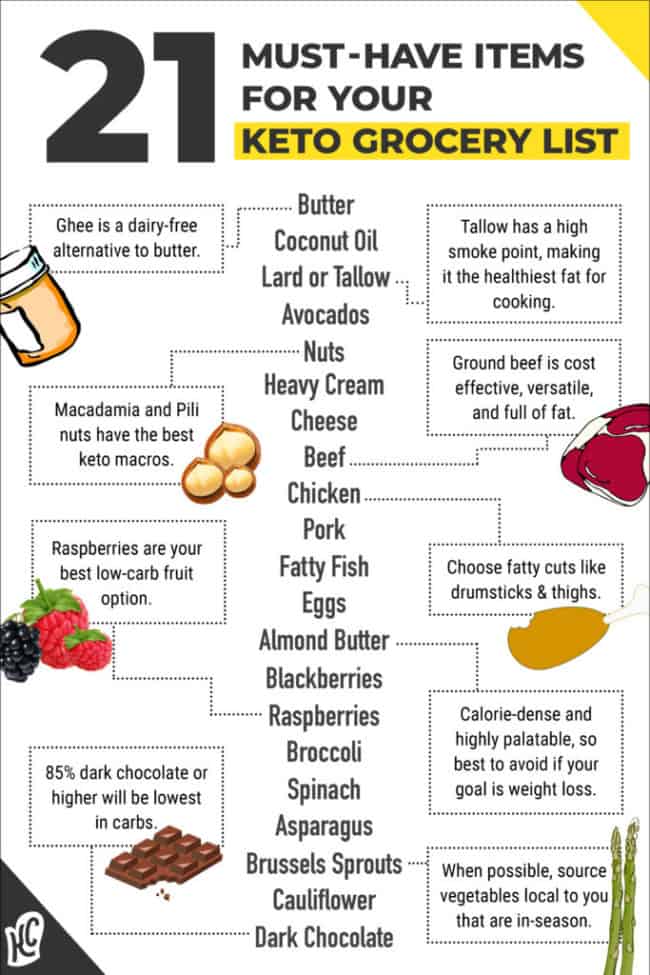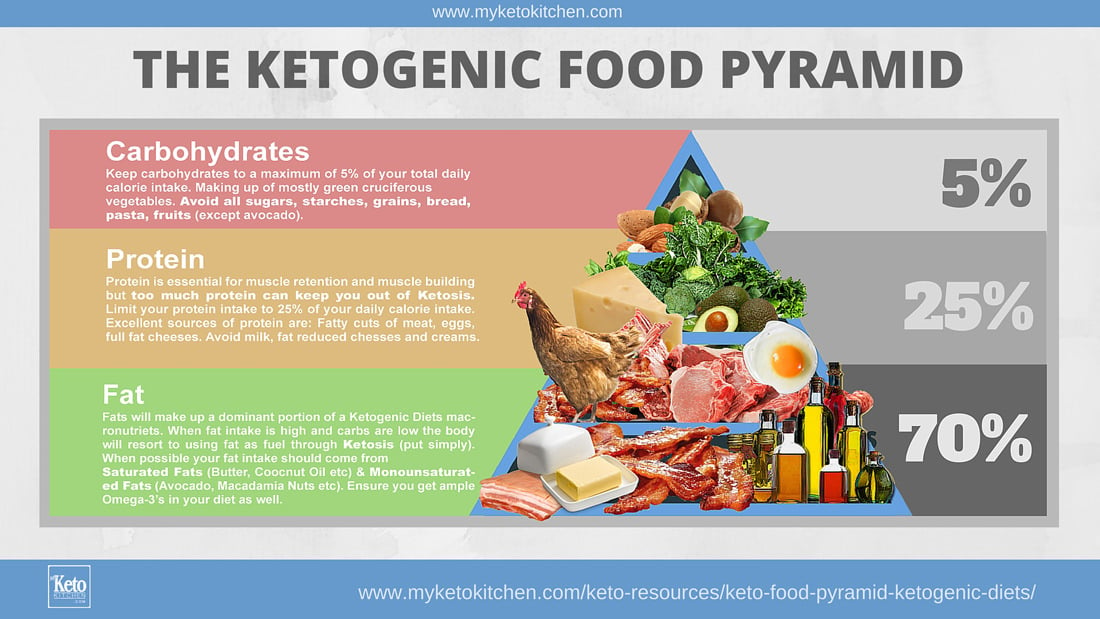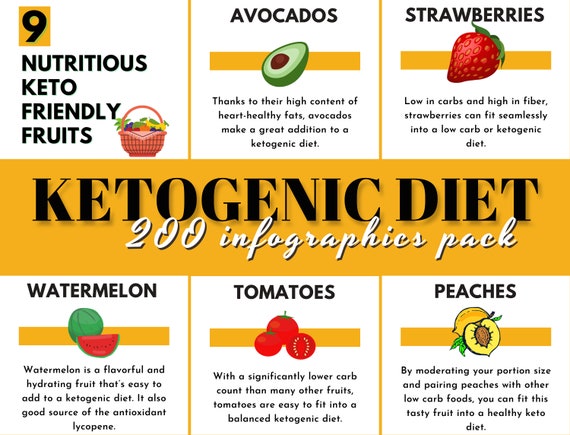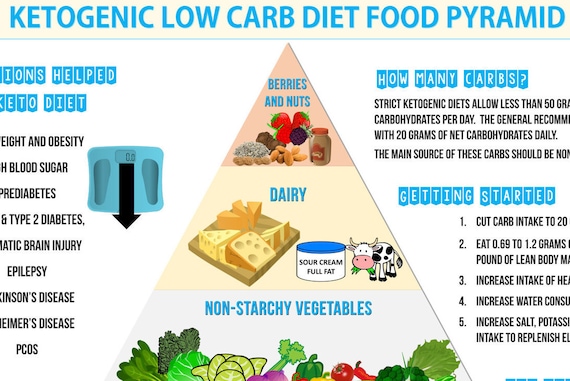Curious about what foods to avoid on a keto diet? Discover the 20 surprising foods you should ditch for success.
Table of Contents
- Introduction: The Do’s and Don’ts of Keto Eating
- Understanding the Keto Diet Basics
- Why Certain Foods Are a No-No on Keto
- Carbs Beware: Cutting Down on Sugars and Starches
- Sneaky Sugars: Hidden Sugar in Everyday Foods
- Fatty Foods: The Good and the Bad
- The Truth About Fruit: High-Sugar Fruits to Exclude
- Proteins on Point: Choices to Limit on Keto
- Alcohol and Keto: Can They Mix?
- Keto-Friendly Alternatives to Popular Foods
- Keep Up with Keto: Tips for Staying on Track
- Conclusion: Enjoying a Healthy and Balanced Keto Diet
- Frequently Asked Questions (FAQs) about Foods to Avoid on Keto
Introduction: The Do’s and Don’ts of Keto Eating
Are you ready to explore the world of keto eating? The keto diet is all about shifting your body to use fat for fuel instead of carbohydrates. It’s like giving your body a new superpower to burn fat efficiently! But to make the most of this lifestyle, you need to know what foods to include and which ones to steer clear of for a healthy keto diet.
Let’s dive into the do’s and don’ts of keto eating to help you understand how to navigate this exciting way of fueling your body!
Understanding the Keto Diet Basics
In simple terms, the keto diet is all about balancing the types of food you eat to help your body burn fat for fuel. Instead of relying on carbohydrates like bread and pasta for energy, the keto diet focuses on increasing your intake of healthy fats and protein while keeping your carb intake low.
By following the keto diet, you’re aiming to achieve a state called ketosis, where your body starts using fat as its primary source of energy. This shift in energy source can help you lose weight and improve your overall health.
When it comes to a healthy keto diet, balance is key. You want to make sure you’re eating the right proportions of fats, proteins, and carbohydrates to maintain ketosis and support your body’s needs.
Why Certain Foods Are a No-No on Keto
When following a keto diet, it’s essential to be mindful of which foods you consume. Not all foods are compatible with the keto lifestyle, and some can hinder your progress towards achieving ketosis. Let’s delve into why certain foods are a definite no-no on keto.

Image courtesy of www.dailyinfographic.com via Google Images
The Impact on Ketosis
One of the primary reasons why certain foods are avoided on a keto diet is their potential to disrupt ketosis. Ketosis is the metabolic state in which your body burns fat for fuel instead of carbohydrates. Consuming foods high in carbohydrates can kick your body out of ketosis, making it challenging to maintain this fat-burning state.
Fueling Fat Adaptation
Another reason to avoid certain foods on keto is to aid in the process of becoming fat-adapted. When you limit your intake of carbs and rely on fats for energy, your body becomes more efficient at burning fat. Introducing carb-heavy foods can interfere with this adaptation process, slowing down your body’s transition to utilizing fats as its primary fuel source.
Carbs Beware: Cutting Down on Sugars and Starches
When following a keto diet, it’s essential to be mindful of the types of carbohydrates you consume. Sugars and starches can hinder your progress in achieving ketosis, where your body burns fat for fuel instead of carbs. Let’s take a closer look at why limiting certain carb-rich foods is crucial for maintaining a proper keto balance.
Understanding the Importance of Balancing Carbs on Keto
Carbohydrates are broken down into sugars in the body, which can elevate blood glucose levels and inhibit the state of ketosis. By cutting down on sugars and starches, you can help your body efficiently transition to using fats for energy.
Foods to Avoid: High-Carb Offenders
Some common sources of sugars and starches that should be limited on a keto diet include sugary treats like cakes, cookies, and candies, as well as starchy foods such as bread, pasta, and rice. These foods can spike insulin levels, making it harder for your body to stay in ketosis.
Additionally, high-carb fruits like bananas, grapes, and mangos should be consumed in moderation or avoided altogether while on a keto diet. Opt for lower-carb alternatives like berries or avocados instead.
Why Keto Balance Matters
Maintaining a proper keto balance involves reducing your intake of sugars and starches while increasing your consumption of healthy fats and moderate protein. This balance is crucial for supporting ketosis and reaping the benefits of a keto lifestyle, such as weight loss and improved energy levels.
By being mindful of the carbohydrates you consume and cutting down on sugars and starches, you can set yourself up for keto success and enjoy the many advantages that come with following a healthy keto diet.
Sneaky Sugars: Hidden Sugar in Everyday Foods
In order to maintain a healthy keto diet, it’s essential to be aware of hidden sugars lurking in everyday foods. Even foods that seem healthy at first glance may contain hidden sugars that can throw off your keto balance. Let’s dive into some common culprits.

Image courtesy of www.myketokitchen.com via Google Images
Reading Labels for Hidden Sugars
When grocery shopping, it’s important to carefully read food labels. Ingredients like maltose, sucrose, dextrose, and high-fructose corn syrup are all forms of sugar that can sneak their way into products. These hidden sugars can be found in items like salad dressings, sauces, and even supposedly “healthy” snacks. Being mindful of these hidden sugars can help you make better choices while on a keto diet.
Avoiding Processed Foods
Processed foods are notorious for containing hidden sugars. Items like processed meats, condiments, and packaged snacks often have added sugars to enhance their flavor. Opting for whole, unprocessed foods is a safer bet when trying to avoid these sneaky sugars. Fresh vegetables, lean proteins, and healthy fats are great options for maintaining a healthy keto diet without the added sugar.
Beverages Can Be Deceptive
Many beverages, including fruit juices, energy drinks, and flavored coffees, are loaded with hidden sugars. Even seemingly innocent choices like low-fat milk can contain added sugars. Opting for water, herbal teas, or black coffee can help you steer clear of hidden sugars and stay on track with your keto lifestyle.
Fatty Foods: The Good and the Bad
When it comes to fats in your diet, not all fats are created equal. Understanding the difference between good and bad fats is essential, especially when following a keto lifestyle for a healthy keto diet.
Good Fats to Embrace
Healthy fats, such as those found in avocados, olive oil, nuts, and fatty fish like salmon, are great choices for a keto diet. These fats provide essential nutrients and can help keep you feeling full and satisfied.
Avoid These Bad Fats
On the other hand, trans fats and highly processed fats like those found in fast food, fried foods, and packaged snacks should be avoided on a keto diet. These unhealthy fats can harm your health and hinder your progress towards ketosis.
Fatty Foods to Sidestep on Keto
It’s important to read labels and choose foods that are rich in healthy fats, rather than hidden unhealthy fats. Keeping an eye out for items like fried foods and processed meats can make a big difference in achieving your keto lifestyle goals.
By understanding the difference between good and bad fats and making wise choices in your diet, you can set yourself up for success on a healthy keto diet journey.
The Truth About Fruit: High-Sugar Fruits to Exclude
When following a keto diet, it’s essential to be mindful of the fruits you consume. While fruits are typically considered healthy due to their vitamins and fiber content, some fruits are high in sugars that might not align with the goals of a keto lifestyle.

Image courtesy of www.freepik.com via Google Images
Fruits to Exclude:
1. Bananas: Bananas are delicious and convenient, but they are also high in carbs and sugars, making them unsuitable for a keto diet.
2. Cherries: Although cherries are packed with antioxidants, they are also quite high in sugars, which can hinder ketosis.
3. Grapes: Grapes are small, sweet, and easy to eat, but they contain a significant amount of natural sugars that may impact your keto balance.
4. Mangoes: Mangoes are known for their tropical sweetness, but this fruit has a high sugar content, making it a fruit to avoid on keto.
When selecting fruits to enjoy on a keto diet, opt for berries like strawberries, blueberries, and raspberries, as they have lower sugar content compared to the fruits mentioned above. Remember to practice moderation, even with lower-sugar fruits, to maintain your keto goals.
Proteins on Point: Choices to Limit on Keto
When following the keto diet, it’s essential to pay attention to the types of proteins you consume. While protein is a crucial macronutrient, some protein sources may not align with the goals of a keto lifestyle. Let’s dig into which protein choices to limit on keto to ensure you stay on track with your healthy eating habits.
Choosing the Right Proteins for Keto
Proteins are vital for building and repairing tissues in the body. Opting for lean protein sources like chicken, turkey, and fish can be excellent choices for a keto diet. These lean proteins offer essential nutrients without the added carbohydrates that may hinder ketosis.
Proteins to Limit or Avoid
Some protein sources may contain hidden sugars or carbohydrates that can disrupt your keto balance. Processed meats like deli meats, sausages, and hot dogs often have added sugars and fillers that can sneakily increase your carb intake. It’s best to limit these processed protein options when following a keto diet.
Precautions with Protein Intake
Additionally, it’s crucial to moderate your protein intake on a keto diet. Consuming too much protein can potentially convert into glucose through a process called gluconeogenesis, which may affect your ketone levels. Be mindful of portion sizes and choose protein sources that align with your keto goals.
| Food Category | Foods to Ditch on Keto |
|---|---|
| Grains | White rice, wheat products, pasta, oatmeal |
| Sugary Foods | Candy, soda, cakes, cookies, ice cream |
| Fruits | Bananas, grapes, mangoes, apples |
| Processed Foods | Chips, crackers, sugary cereals, fast food |
| Starchy Vegetables | Potatoes, corn, peas |
| Legumes | Beans, lentils, chickpeas |
Alcohol and Keto: Can They Mix?
When following a keto diet, it’s essential to watch what you eat and drink. But what about alcohol? Can you enjoy a drink while staying true to your keto lifestyle? Let’s find out.

Image courtesy of www.etsy.com · In stock via Google Images
Effects of Alcohol on Ketosis
Alcohol can impact your body’s ability to stay in ketosis, the state where it burns fat for energy instead of carbs. When you drink alcohol, your body prioritizes metabolizing the alcohol before fat. This could temporarily halt your fat-burning process, slowing down your progress on the keto diet.
Alcoholic Drinks to Avoid
Not all alcoholic beverages are created equal when it comes to keto-friendliness. Drinks with added sugars, like cocktails and sweet wine, should be avoided. These sugary additions can kick you out of ketosis, making it harder to reach your goals.
Beer is another drink to steer clear of on a keto diet. It contains carbs that can quickly add up and sabotage your efforts to stay in ketosis. Opt for light beer if you must have one, but remember to keep track of your carb intake.
Keto-Approved Alcohol Choices
If you choose to enjoy a drink while on keto, stick to clear liquors like vodka, gin, or tequila. These options are lower in carbs and less likely to hinder your progress on the keto diet. Mix them with soda water or a splash of lemon or lime juice for a refreshing low-carb cocktail.
Red and white wines can also be acceptable in moderation, as they tend to have fewer carbs compared to sweeter varieties. Remember to consume them sparingly and factor in their carb content when planning your meals.
Always remember to stay hydrated and listen to your body when consuming alcohol on a keto diet. Moderation is key to maintaining ketosis and reaching your health goals.
Keto-Friendly Alternatives to Popular Foods
When following a keto lifestyle, it’s essential to find alternatives to popular foods that may not align with the requirements of the keto diet. Here are some options to replace commonly avoided foods with ones that fit the keto lifestyle without compromising on taste.
Swapping out Carbs
For those craving pasta but looking to reduce carbs, zucchini noodles (zoodles) or spaghetti squash can be excellent substitutes. They provide a similar texture to pasta without the high carbohydrate content, making them ideal for a keto-friendly meal.
Healthy Fat Choices
Instead of reaching for processed oils or butter, opt for healthier fats like avocado, olive oil, or coconut oil. These options not only add flavor to dishes but also provide essential nutrients for a balanced keto diet.
Sweet Treats without the Sugar
For those with a sweet tooth, swapping out sugar for alternatives like stevia or monk fruit can satisfy cravings without spiking blood sugar levels. Additionally, using almond flour or coconut flour in baking can create delicious treats without the added carbs.
Protein Packed Substitutes
When looking for protein sources that align with a keto diet, consider options like tofu, tempeh, or skinless poultry. These alternatives offer high-quality protein without the excess carbohydrates, making them a suitable choice for keto-friendly meals.
By making smart choices and exploring keto-friendly alternatives, it’s possible to enjoy a variety of delicious meals while staying on track with a healthy keto diet.
Keep Up with Keto: Tips for Staying on Track
Embarking on a keto lifestyle can be an exciting journey towards health and wellness. To ensure you stay on track and make the most of your keto diet, here are some valuable tips to help you maintain a keto balance.

Image courtesy of www.etsy.com · In stock via Google Images
Plan Your Meals Ahead
One of the most effective ways to stay on track with keto is to plan your meals in advance. By preparing your meals ahead of time, you can ensure that you have keto-friendly options readily available, making it easier to avoid straying from your healthy keto diet.
Stay Hydrated
Drinking plenty of water is essential when following a keto lifestyle. Adequate hydration not only supports overall health but also helps curb cravings and maintain your energy levels. Remember to hydrate throughout the day to support your keto balance.
Monitor Your Macros
Keeping track of your macronutrient intake is crucial for staying on track with keto. By monitoring your macros – fats, proteins, and carbohydrates – you can ensure that you are maintaining the right balance to support ketosis and a healthy keto diet.
Find Support and Accountability
Joining a community of fellow keto enthusiasts or enlisting the support of friends and family can greatly aid you in sticking to your keto lifestyle. Having accountability partners can motivate you to stay committed and make the journey more enjoyable.
Listen to Your Body
Every individual is different, and what works for one person may not work for another. Pay attention to how your body responds to the keto diet and make adjustments accordingly. Tuning in to your body’s signals can help you maintain a sustainable keto balance.
Set Realistic Goals
Setting achievable goals in your keto journey is essential for long-term success. Celebrate small victories along the way and be patient with yourself as you navigate the challenges of maintaining a keto lifestyle. Remember, progress is progress, no matter how small.
By incorporating these tips into your daily routine, you can stay on track with your keto lifestyle and reap the many benefits it has to offer. Remember, consistency is key, and with determination and a positive mindset, you can successfully maintain a healthy and balanced keto diet.
Conclusion: Enjoying a Healthy and Balanced Keto Diet
After delving into the ins and outs of the keto diet, it’s clear that making the right food choices is essential for maintaining a healthy keto lifestyle. By understanding what foods to avoid and which ones to embrace, you can ensure that your body stays in ketosis and effectively burns fat for fuel.
Remember, the key to a successful keto diet lies in finding a balance that works for you. While it may be tempting to indulge in sugary treats or carb-heavy snacks, staying steadfast in your commitment to a healthy keto diet will yield long-term benefits for your overall well-being.
By steering clear of high-sugar fruits, sneaky sugars in everyday foods, and carb-heavy options, you can pave the way for a healthier, more energetic you. Opt for keto-friendly alternatives and keep your protein intake in check to maintain a sustainable keto lifestyle.
Embrace the good fats, limit the bad ones, and enjoy the delicious variety of foods that are compatible with the keto diet. With dedication, discipline, and a bit of creativity in the kitchen, you can savor a healthy and balanced keto diet that supports your health goals and keeps you feeling great.
Frequently Asked Questions (FAQs) about Foods to Avoid on Keto
Why is it important to avoid sugar on a keto diet?
Sugar consumption can disrupt the process of ketosis, which is essential for the keto diet to work effectively. When you eat sugar, your body breaks it down into glucose, which is a source of energy. However, on a keto diet, the goal is to shift your body’s primary fuel source from glucose to fat. Consuming sugar can spike your blood sugar levels, leading to the production of insulin, which hinders fat burning. Therefore, avoiding sugar helps maintain ketosis and promotes fat burning for energy.
Can I eat any fruits on a keto diet?
While certain fruits are high in sugars and may not be ideal for a keto diet, there are low-sugar options that can be enjoyed in moderation. Berries like strawberries, raspberries, and blackberries are lower in sugars compared to fruits like bananas or mangoes. These fruits can be included in your diet in limited amounts while still adhering to the principles of the keto lifestyle.
Is it possible to eat too much protein on a keto diet?
Consuming excessive amounts of protein on a keto diet can potentially kick you out of ketosis. When you consume more protein than your body needs, a process called gluconeogenesis can occur. This process converts excess protein into glucose, which can impact your ability to enter or maintain ketosis. Therefore, it’s important to strike a balance with your protein intake on a keto diet, consuming an adequate amount to support muscle growth and repair without overdoing it.





